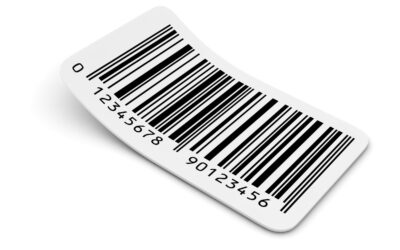Though, in practice, it is the heart of efficient church asset management, a church asset register sounds more like a strictly administrative instrument. Far more than just a list of objects, it’s a potent tool that guarantees every asset—from the pews that seat the congregation to the sound system that raises voices in worship to the historical relics that link us to our spiritual legacy—is taken care of and considered.
Effective asset tracking for the church enables this register to assist in preserving and improving the tools supporting your mission.
A church asset register helps you save time and money. In essence, an asset register is a log of all of your assets. With this system in place, you can see where your assets are, who has them, and how they’re behaving.
Overall, having these capabilities helps you monitor where efficiencies can be created and where there any gaps, helping you prevent lost assets and duplicate purchases.

A church’s assets are the basic tools it depends on to run daily operations, serve its purpose, and assist worship activities. These assets range in kind from digital tools and even financial investments to physical objects like buildings and machinery. Effective church asset management and ensuring every resource is used to its best depend on an awareness of what exactly qualifies as a church asset.
Physical assets, which range from the church building itself to the furniture within it—such as pews, altars, and office desks—are most obvious. Enhancing the worship experience depends much on sound systems and musical instruments such as organs and pianos. Furthermore regarded as valuable assets are any vehicles the church has, including vans or buses utilised for transportation activities.
Apart from the physical objects, churches depend more and more on digital and technical tools. Church asset management calls for computers, printers, and administrative tools. Specialised programs like a check-in system for churches simplify chores like attendance tracking, therefore enabling the management of big congregations. Another useful tool is media technology, which includes cameras and projectors, especially in contemporary worship environments, where visual presentations and recordings are rather popular.
Though less obvious, both financial and intangible assets are quite valuable. These could comprise endowments, investments, and objects of historical or spiritual value—such as old texts or relics. These treasures need careful maintenance to be kept for the next generations since they frequently have great spiritual as well as financial worth.
Churches may use a church inventory template, which offers a methodical approach to document and monitor every item’s specifics—including its location, condition, and value—in order to properly manage their many resources. This methodical approach not only helps to preserve the assets but is also rather important for financial planning, budgeting, and making sure the resources always support the mission of the church. Church leaders can guarantee that these resources are kept, maintained, and used sensibly by properly knowing and controlling them, therefore helping the church to be sustainable over the long run.
What Is A Church Asset Register?

Good church inventory management requires a proper church asset register. From big and important artefacts to little, daily stuff, it is a thorough inventory of every physical item a church holds. Along with helping to keep track of what the church possesses, this register is absolutely essential for preserving the lifetime and usefulness of these resources.
This is a more comprehensive analysis of what a church inventory checklist looks like:
Inventory of Assets:
- Furniture for different areas of the church includes chairs, pews, tables, and cupboards.
- Pianos, organs, guitars, and other instruments are fundamental for worship events.
- Microphones, speakers, projectors, and screens used in sermons and events include audio-visual equipment.
- Computers, printers, desks, and other administrative tools make up office supplies.
- Specialised objects include baptismal fonts, communion goods, and religious relics.
Tracking Details:
- Location: The precise location within the church where every asset is found.
- Condition: Frequent updates on the state of every object highlighting wear and tear or maintenance requirements.
- Value: Every asset’s financial value guides insurance evaluations and replacement or upgrade budgets.
Asset Identification:
- Every item in the register is labelled and identified using church asset tags. Usually, barcodes or QR codes, these tags allow one to rapidly access asset information by scanning.
- Every tagged item is connected to the sample asset register, which guarantees constant accuracy and update simplicity by means of which the inventory is constantly current.
More than just a list, a well-maintained Church Asset Register is a dynamic management tool that enables church leaders to make wise decisions about buying, preserving, and even selling assets as needed. Maintaining a thorough and orderly register helps the church to guarantee the best possible use of its resources, therefore supporting its mission and operations.
As we now know, a church asset register is a log of your assets and relevant information related to your assets. In the past, spreadsheets were largely used to log, monitor, and track this information.
However, spreadsheets create gaps. This is because every time an asset moves, an asset register will become out of date. Also, each cell on your asset register corresponds to a critical bit of information, so it’s easy to lose data this way.
This is where asset register software comes in. With church inventory software, you can log asset information in unique profiles that correspond to assets instead of letting information get lost in a spreadsheet.

Using Asset Register Software
How can asset tracking help your Church? It is simple! Asset register software creates efficiencies in every operation and allows you to have more automation when tracking your assets. For example, you’ll be able to use asset tags on certain assets. However, it is not the only feature that will improve your experience in church asset management.
Asset tags allow you to track asset locations in real time, as every time you scan a tag with your smartphone, the last location you see automatic updates using your phone’s GPS. But there is even more!
Also, whenever you scan an asset’s tag, the asset’s profile will open up, ready for you to log any issues or additional usefull information.
There are many more helpful features that you can use, including a check in check out system for equipment you’re booking out for people. Overall, this keeps things simple and transparent for the church.
Saving Time And Money With Asset Tracking Software
Using church asset management software features saves you time and money as you create a visible, usable audit trail. This means that you’re less likely to lose assets or purchase unnecessary duplicates.
Asset tracking software is highly customisable to your needs, too. So, if you’re tracking fixed assets, you can track asset depreciation. If you’re tracking asset bookings, you can use a check in check out system.
Any data you collect with your day to day tracking is pulled into an automated report that you can then view, edit, manage and export. This gives you clarity over where your assets are, who is using them, and how they’re behaving.
To find out more about how itemit’s church asset register software can help you, you can contact the team at team@itemit.com. You can also fill in the form below to start your 14-day free trial.
Saving Time And Money With Asset Tracking Software
Using asset tracking software features saves you time and money as you create a visible, usable audit trail. This means that you’re less likely to lose assets or purchase unnecessary duplicates.
Asset tracking software is highly customisable to your needs, too. So, if you’re tracking fixed assets, you can track asset depreciation. If you’re tracking asset bookings, you can use a check in check out system.
Any data you collect with your day to day tracking is pulled into an automated report that you can then view, edit, manage and export. This gives you clarity over where your assets are, who is using them, and how they’re behaving.
To find out more about how itemit’s church asset register software can help you, you can contact the team at team@itemit.com. You can also fill in the form below to start your 14-day free trial.
Frequently Asked Questions
What specific features should a church look for in asset register software?
Look for a user-friendly interface, customizable reporting tools, support for church asset tags, and secure, cloud-based storage for easy access and data safety.
How does a church asset register handle donations or gifted assets?
Donated or gifted assets are logged into the system with details like donor information and estimated value, ensuring they’re managed alongside purchased items.
What is the process for migrating existing church asset records into new software?
The process involves cleaning up existing records, exporting them in a compatible format, and importing them into the new system, followed by a review to ensure accuracy.
Can church asset register software track asset depreciation?
Yes, many software solutions include tools to track depreciation, helping churches monitor asset value over time.
Is it possible to assign multiple users to manage the church asset register?
Yes, most software allows multiple users with different access levels, enabling collaborative management of the church inventory template.
What is a Church Asset Register?
Choose a better way to track your assets
Start your free 14-day trial now
Instant access. No credit card details required.
Related articles
Everything You Need to Know About 2D Barcodes
Discover everything about 2D barcodes, including how they work, their benefits, and how they are revolutionizing industries and improving business operations
Complete Guide to Asset Lifecycle Management and Its Benefits
Learn about asset lifecycle management and how it helps businesses optimize asset usage, reduce costs, and improve efficiency throughout the asset’s life.
Benefits of Vendor Managed Inventory for Your Business
Learn how Vendor Managed Inventory (VMI) can streamline your supply chain. Explore the key benefits and how it helps optimize inventory management.




